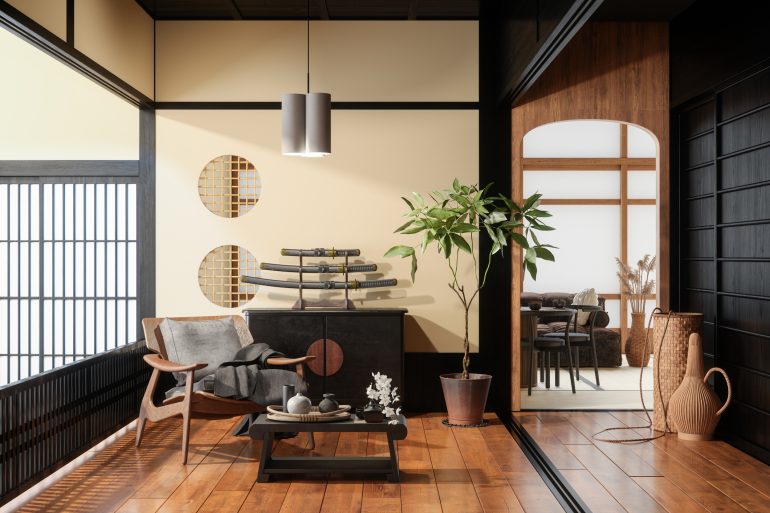
Home is not merely a place to slumber; it is a reflection of one’s lifestyle, climate, and cultural values. Throughout the world, the design of dwellings reveals the manner in which individuals live, prioritize, and interact with their surroundings. Two distinct approaches emerge when contrasting residences in Western countries and ASEAN nations: Western minimalism and ASEAN functionality. Despite their distinct appearance and structure, each design is well-suited to its intended purpose, which is profoundly rooted in practical requirements and cultural habits.
Western Minimalism: Stylish, Simple, and Clean
Western home design has become characterized by minimalism. Minimalist homes are distinguished by their open spaces, neutral color palettes, and clear lines, and are prevalent in countries such as the United States, Canada, the United Kingdom, and a significant portion of Europe. Simplicity, order, and visual tranquility are prioritized in this design trend.
**Decluttered Spaces: Western minimalist residences are devoid of excess. The furniture is modern and streamlined, frequently consisting of only the bare necessities: a lamp, a coffee table, a settee, and perhaps a few art pieces.
Neutral Colors**: Whites, grays, beige, and muted tones are the most prevalent. The objective is to establish a tranquil environment that exudes tranquility and spaciousness.
**Open-Plan Layouts**: A significant number of Western residences are designed with open living, dining, and kitchen areas. This design fosters social interaction and creates a sense of expanded space.
Technology and Efficiency**: In newer Western properties, smart residences with integrated lighting, climate control, and security systems are becoming increasingly prevalent.
Western values of individualism, organization, and control are allured by minimalism. It is consistent with a lifestyle that prioritizes privacy, minimal maintenance, and a sense of mental tranquility through physical space.
ASEAN Functionality: Practical, Family-Oriented, and Adaptable
Thailand, Vietnam, the Philippines, Malaysia, and Indonesia are among the ASEAN countries where home design is primarily centered on functionality. Rather than adhering to design trends, numerous residences are constructed with the consideration of family dynamics, weather, and daily requirements.
* **Multipurpose Rooms**: A single room may function as both a living space during the day and a resting area at night. This is facilitated by furniture such as foldable rugs, futons, or floor cushions.
* **Natural Ventilation**: In hot and humid climates, homes are frequently constructed with expansive windows, ceiling fans, and open spaces to allow for the circulation of air.
* **Tile and Concrete Floors**: They are preferred over carpets, which retain heat and grime, due to their ease of cleaning and cooling properties.
* **Space-Saving Features**: In densely populated areas, particularly cities such as Manila, Bangkok, and Jakarta, tiny residences are equipped with furniture that can be tucked away or used for multiple purposes.
* **Outdoor Living**: Numerous ASEAN residences feature balconies, courtyards, or terraces that are utilized for socializing, cooking, and dining.
Family life is a fundamental aspect of ASEAN cultures, and this is frequently reflected in the architecture of residences. The spaces are intended to facilitate community interactions and multi-generational families, with a greater emphasis on adaptability and sharing than on seclusion.
Reflections on Culture in Design
The distinctions between Western and ASEAN household designs are indicative of more profound cultural themes:
* **Individual vs. Collective**: Western minimalism frequently involves the establishment of a personal sanctuary. The purpose of ASEAN functionality is to meet the collective requirements of a household.
* **Climate Response**: Western dwellings are typically designed to withstand colder climates by incorporating insulation. Homes in the ASEAN region are constructed to accommodate heat, with an emphasis on ventilation, shelter, and open windows.
* **Practicality vs. Aesthetics**: Western interiors frequently prioritize visual proportion, style, and decor. The interiors of ASEAN countries are designed with a focus on practicality, efficiency, and daily use.
Global Influences and Evolving Trends
Design concepts are transcending national boundaries as a result of globalization and the internet. While maintaining practical elements for tropical living, numerous younger householders in ASEAN countries are beginning to adopt minimalist aesthetics, including clearer layouts, subdued color schemes, and Scandinavian furniture.
In the meantime, there is a growing recognition in the West for functional design that prioritizes sustainability, shared spaces, and multi-purpose rooms, which are values that have been present in ASEAN households for a long time.
The COVID-19 pandemic also had an impact on both regions, compelling individuals to reevaluate their residences as multifunctional spaces that accommodate work, education, and leisure.
In conclusion,
The requirements and identities of the individuals residing in each style are reflected, whether it is the calm simplicity of Western minimalism or the adaptive design of ASEAN functionality. The one that prioritizes personal serenity through clear design is distinct from the other, which prioritizes togetherness and flexibility. Future homes may draw inspiration from both cultures as they evolve and merge, resulting in living spaces that are not only functional and fashionable, but also profoundly human.
Leave a Reply